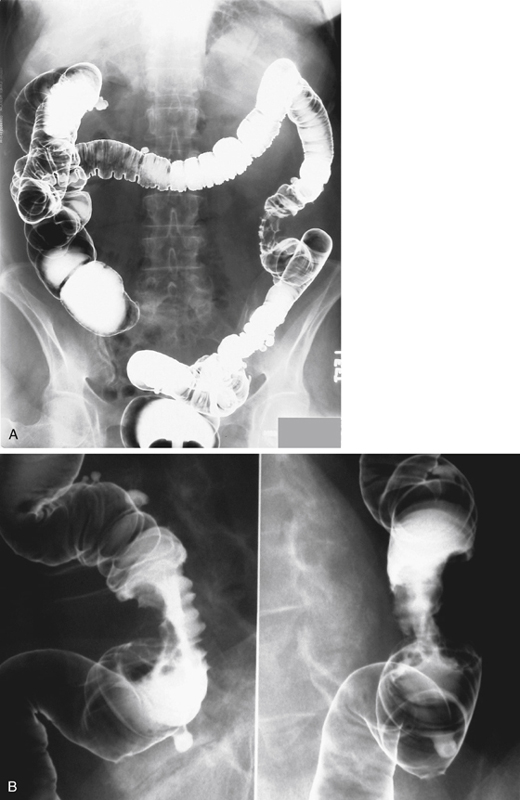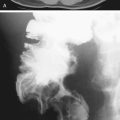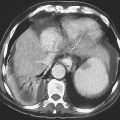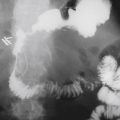CASE 112

History: A 42-year-old woman presents with a positive occult stool test.
1. What should be included in the differential diagnosis of the imaging finding shown in Figure A? (Choose all that apply.)
D. Familial adenomatous polyposis
E. Primary colonic adenocarcinoma
2. Further family history and genetic testing identify the patient is at high risk for cancer because she has hereditary nonpolyposis colorectal cancer (HNPCC) syndrome. What is another name for this syndrome?
3. Lynch syndrome is associated with an increased risk of developing other cancers. What is the most common extracolonic tumor?
4. What is the genetic basis of HNPCC syndrome?
A. Defective DNA mismatch repair sequences
B. Mutation of the APC tumor suppressor gene
C. Mutation of the PTEN tumor suppressor gene
D. Mutation of the STK11/LKB1 tumor suppressor gene on chromosome 19
ANSWERS
CASE 112
Hereditary Nonpolyposis Colorectal Cancer Syndrome
1. A, B, C, and E
2. A
3. C
4. A
References
Lynch HT, Shaw MW, Magnuson CW, et al: Hereditary factors in cancer: study of two large Midwestern kindreds. Arch Intern Med. 1966;117(2):206–212.
Cross-Reference
Gastrointestinal Imaging: THE REQUISITES, 3rd ed, p 302.
Comment
Approximately 2% of new cases of colorectal cancer fall into the category of HNPCC. Patients with HNPCC syndrome and familial adenomatous polyposis syndrome are considered to be in the high-risk category and should undergo regular screening. Although air contrast barium enema (ACBE) has been shown to be a good screening tool, its impact in cancer screening has decreased, it is not discussed in most literature on the subject, and its use has diminished. ACBE must be performed by competent radiologists with considerable experience and expertise in technique and diagnosis (see figures). The fewer ACBEs done, the less reliable the examination is likely to be, setting up a vicious cycle.
Colonoscopy is becoming the routine examination of choice. However, radiologists have begun to evaluate CT colonography as a far safer option (and, it is hoped, with good accuracy and sensitivity) than colonoscopy. Routine CT is proving to be a good diagnostic tool for detecting bowel lesions. These are usually incidental findings, and except for some polyposis syndromes, high-risk patients or patients with Lynch syndrome cannot be identified radiologically.
Patients with HNPCC are at increased risk for endometrial, ovarian, hepatobiliary, stomach, and small bowel cancers. DNA mismatch repair sequences are normal genetic processes that identify and repair replication errors during cell division. When the mismatch repair sequence is unstable or dysfunctional on certain of several genes, mutation can occur, and the risk of cancer is increased.







